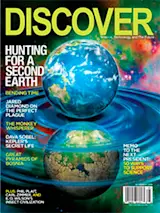Zielona Gora, Poland—The great German astronomer Johannes Kepler (1571–1630) arrived in this forested region to serve his last employer exactly 380 years ago—reason enough for some two dozen science historians to gather here and celebrate with a conference. For five days in late June, they regaled each other with the fruits of their own recent research into their hero’s achievements and also took advantage of the venue to visit sites, including the ducal palace and tavern in nearby Zagan, where Kepler’s ghost might be evoked.
“Once he gets under your skin,” confessed conference participant Terry Mahoney of the Instituto de Astrofísica de Canarias (Spain), “there’s no escaping him. You just have to love the man.” Mahoney had taken a costly detour en route to the meeting for a pilgrimage to Kepler’s birthplace in Weil der Stadt, Germany.
Lovable Kepler embraced the sun-centered cosmos of his somber predecessor, Nicolaus Copernicus (1473–1543), ...














